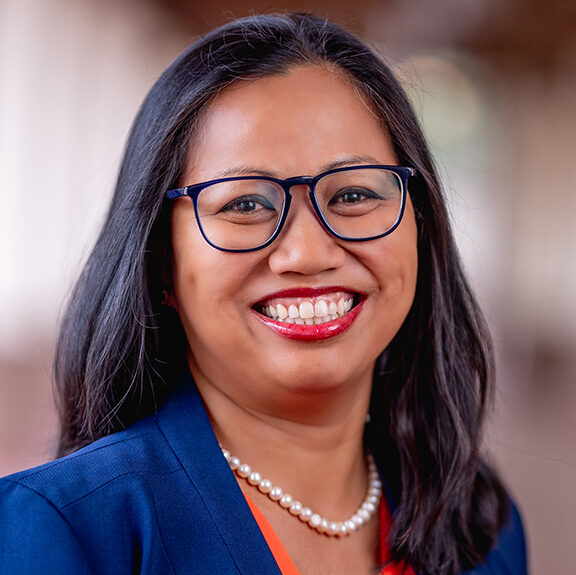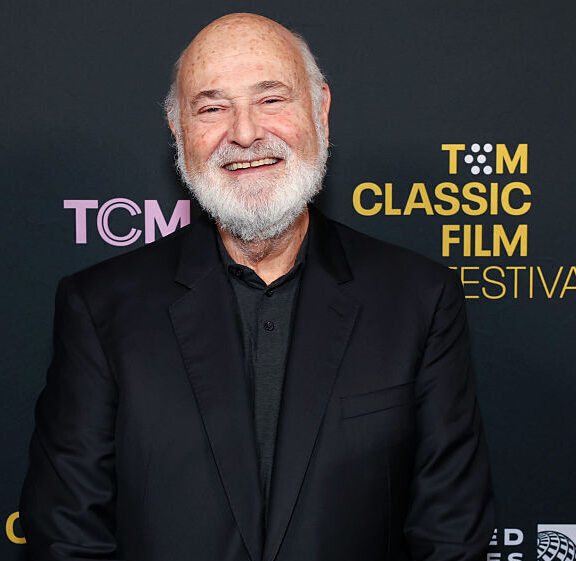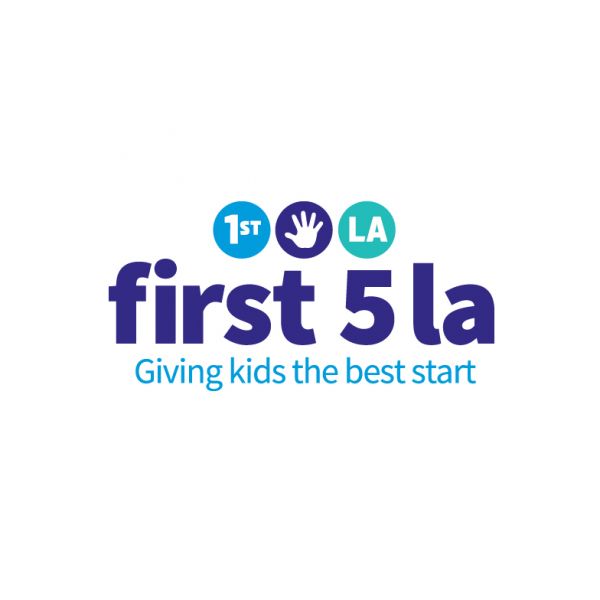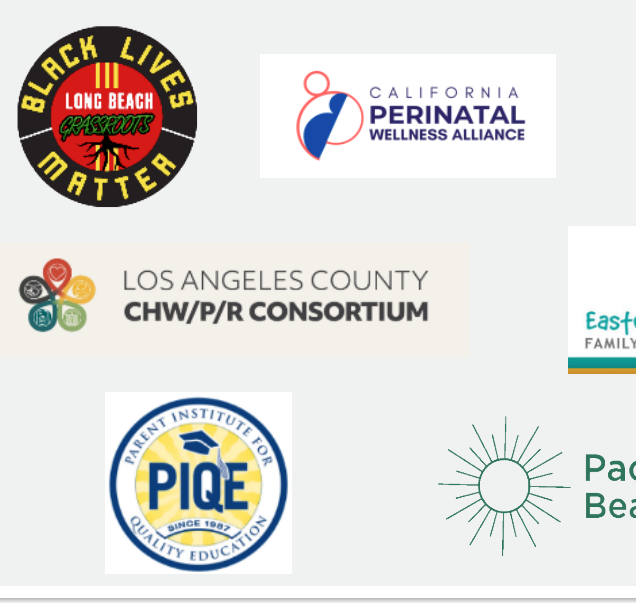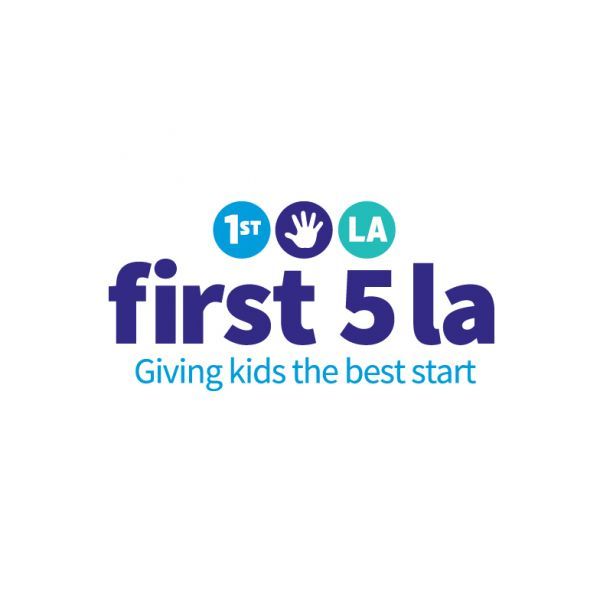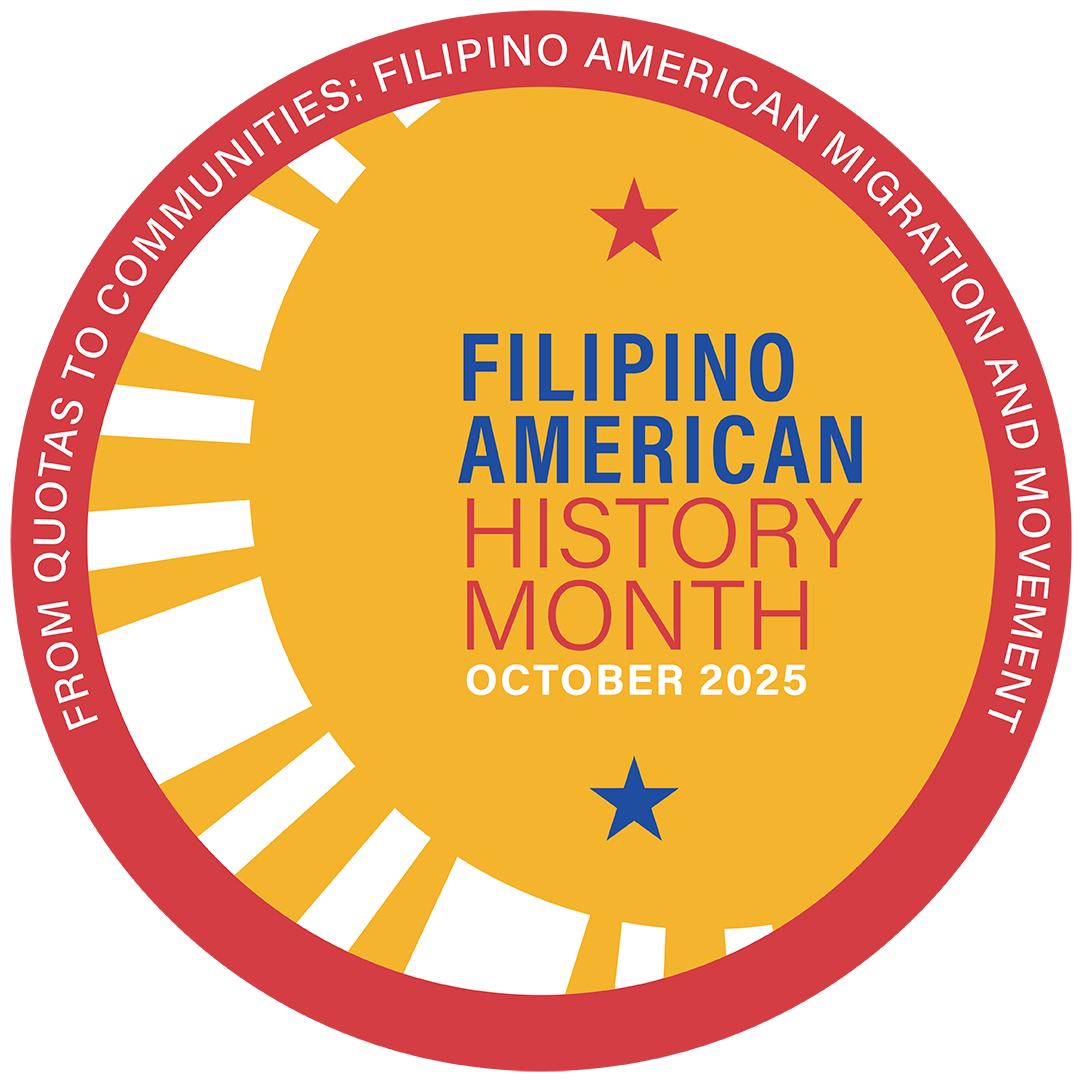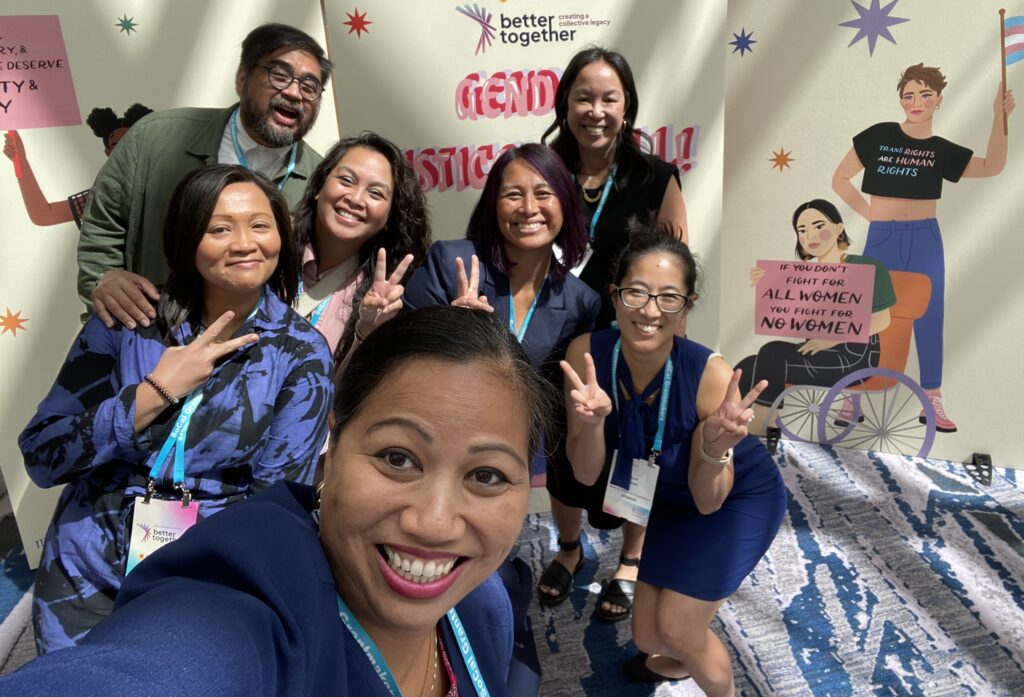
First 5 LA Program Officer Pilar Diaz stands with Asian American Pacific Islanders in Philanthropy members Gerlie Collado, Panta Rhea Foundation, Michael Nailat, Catalyst California, Roselma Samala, Weingart Foundation, Kristin Aldana-Taday, Conrad N. Hilton Foundation, Joyce Ybarra, Weingart Foundation, and Millie Yamaki, Bank of America.
As part of our celebration of Asian American, Native Hawaiian and Pacific Islander (AANHPI) Heritage Month and this year’s theme — A Legacy of Leadership and Resilience — we chat with First 5 LA’s Pilar Diaz about the importance of AANHPI identity and representation. Pilar, a program officer at First 5 LA with a long history of working alongside and within AANHPI communities, shares her reflections on visibility, culture, and why accurate representation is essential to equity.
Let’s start with something personal. When you think about AANHPI Heritage Month, what comes to mind first? A moment, an experience, maybe even a contradiction?
When I think about AANHPI Heritage Month, I immediately think about how hard it is to capture the richness of so many different cultures. There are so many lands, territories, and islands represented, each with its own history, religion, politics and relationship to the U.S. If we’re going to celebrate AANHPIs — especially under the umbrella of “Americans” — I think it’s also important to acknowledge how and why many of us came here, or in some cases, were brought here.
There’s also the question of who gets included in “AANHPI.” Some communities we consider part of “us” — like South Asians — sometimes get placed in a different category altogether. Growing up Filipino, I didn’t really think about any of this until I moved to Los Angeles. It was surprising to be grouped suddenly into a broad identity category. I know we have Filipino American History Month in October, but in a lot of data and conversations, we’re still lumped in with the larger AANHPI population.
AANHPI Heritage Month began back in 1977 as Asian Pacific Heritage Week, as a response to the invisibility of the community. Forty-seven years later, what histories or truths do you think still aren’t getting the attention they deserve?
There are still so many histories that don’t get the attention they deserve. One is the ongoing impact of U.S. immigration policy — not just on people coming here, but on the countries they leave behind. We rarely talk about how that leads to brain drain or affects those communities long-term. Another is the legacy of U.S. military and strategic interests in the Pacific. From environmental damage to health issues that continue today, Indigenous communities — like the Marshallese — have carried a heavy burden, yet they’re often left out of the broader AANHPI narrative.
I’ve also noticed that even when we say “AANHPI,” most of the programming and storytelling ends up centering Asian Americans. Native Hawaiian and Pacific Islander voices still get sidelined. There’s been progress around calling for disaggregated data, which is great, but it can’t stop there. We need to follow through by making sure all our stories are actually being told.
Many communities aren’t accurately seen or heard, whether in data, services, or historical accounts. When that happens, what have been the real-world consequences?
We’re seeing that the lack of disaggregated data perpetuates a cycle of invisibility. For example, Native Hawaiian and Pacific Islander (NHPI) communities are often considered too small to be statistically significant, so they are frequently left out of the data. Without data, their needs are overlooked, with agencies failing to provide the appropriate resources or services. This leads to low engagement with public agencies, which then reinforces the lack of data, continuing the cycle.
A lot of systems rely on data to drive decisions, but data doesn’t always tell the whole story. How do you balance the need for metrics with the need for human nuance?
Balancing data with nuance starts by understanding how trust and communication work in AANHPI communities. In NHPI communities, for example, it’s essential to meet in person and engage elders — their support can carry more weight than even elected officials. In some Asian American communities, faith leaders play a similar role. Given how the U.S. has historically treated both older generations and newer immigrants, many people are wary of institutions. They’re more likely to trust someone they already have a relationship with — a community leader, a faith-based organization, a nonprofit, or an advocacy group. So if you want accurate, meaningful data, you need to partner with those trusted messengers.
But trust takes time. Too often, AANHPI communities are only called on when there’s an empty seat at a roundtable that needs to be filled. And even then, it’s usually the same groups being asked.
Real relationship-building means reaching beyond the usual networks, staying in touch, and showing up consistently — not just when something is needed. That’s what helps ensure the data reflects the full picture, not just what’s easiest to collect.
AANHPI communities in LA are incredibly diverse. Whose experiences are still being left out of the conversation, and what needs to shift to change that?
Pacific Islanders. During the pandemic, LA County worked with NHPI leaders to respond to the disproportionately high number of cases in their communities, where underlying health conditions increased the risk of serious illness. Most of the representatives involved were NHPI elders. Moving forward, LA County should re-engage not only these elders but also the next generation of leaders.
We’re seeing more public recognition of AANHPI communities. But recognition isn’t always the same as investment. What gaps between being seen and being supported have you observed?
AANHPI community groups and individuals are collaborating more and providing greater support to one another. We’re also seeing increased diversity within these organizations themselves — for example, there tends to be more South Asian and Pacific Islander representation among staff. It would be great if County systems provided more support to these collaborations.
L.A. County is developing a “State of AANHPI in Los Angeles County” report. What elements of the report do you think will be especially important?
Methodology will be an important element. How the data is collected matters. I hope ARDI takes to heart the suggestions shared at the town hall — especially the idea of reaching out to people based on their ethnic or cultural communities rather than just using government-defined areas like planning districts. That kind of approach could lead to better data because trusted community leaders can help explain the purpose and encourage participation. Even when people live in different neighborhoods, they often stay connected through family and friends — and they’re more likely to engage if someone they know is already involved.
With this report in the works, what would meaningful follow-through actually look like?
There should absolutely be a plan of action. A lot of what the report will highlight may already be familiar to AANHPI communities. But meaningful follow-through, with concrete steps, shows that the County is listening and ready to act. That’s how you turn a report into a tool for change.
Another way to follow through is by appointing more AANHPI individuals to County boards and commissions. I’m grateful to Supervisor Holly Mitchell for appointing me as one of the two community members on the West Carson Enhanced Infrastructure Funding District. The Department of Public Social Services also has AANHPI commissioners, as do several other County commissions. Still, it would be great to see more AANHPI representation on commissions that directly impact young children and their families.
That might not seem like a big deal to the general public, but our communities notice. These appointments matter — they make us more visible, and just as importantly, they give us a platform to advocate for our community’s needs.
Pilar is a communities program officer with First 5 LA’s Center for Child and Family Impact
